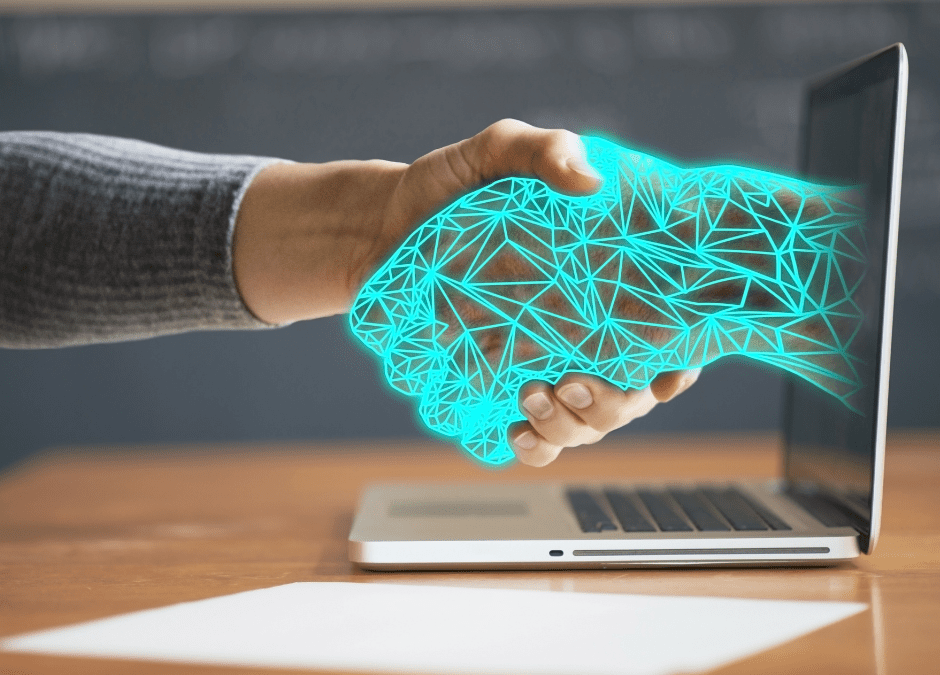The tech industry continues to grow at a fevered pace, and its impacts grow ever more profound seemingly on a daily basis. It’s as true for business tech as it is for personal applications. There are digital technologies being developed right now that will change our everyday lives, shaping this next decade and possibly even how we do things forever.
Here’s where we queue the futuristic, cinematic music to stir feelings of uncertainty and trepidation, right? To provide some sort of backdrop of tech ruling some dystopian society?
WRONG! These technologies are nothing to fear. They’re to be embraced. They’ll streamline our businesses and make them more productive. They’ll facilitate communication, connection and cooperation. They’ll evolve as we continue to evolve – serving our purposes as tools for both commerce and leisure.
Check Out These Digital Technologies that are Changing the World
That’s IF more of us collectively learn them – and learn to harness their power toward our personal and professional aspirations! So let’s check these emerging digital technologies, and see how they might fit in your lives.
1. Cloud & Edge Computing
Cloud computing has been around awhile now. It’s a type of data storage using other devices and servers for instant access, wherever you are, via the internet. It has opened the world of data and analytics to smaller and smaller organizations who could never have dreamed of using them to inform business decisions just a few short years ago. Soon, cloud computing will be taken to the next level known as edge computing, where data is processed on smart devices (like phones).
2. The Internet of Things (IoT)
Another thing you’ve likely heard of – perhaps without knowing much about it – but it’s becoming so pervasive we barely notice the Internet of Things working in our daily lives. IoT is the great volume of “smart” devices connected to the internet and allowing us to control things from the home thermostat and refrigerator to smartwatches monitoring our health. They’re constantly gathering and transmitting data, fueling Big Data and AI (which we’ll discuss soon).
3. Mass Personalization & Micro-Moments
Mass-personalization offers personalized products and/or services on a mass scale. Meanwhile, the term “micro-moments” are a digital marketing tactic that creates real-time responses to customer needs – at the perfect moment to influence decision-making and convert a sale. Both are boosted by digital technologies like AI, Big Data, and analytics.
4. Artificial intelligence (AI) & Machine Learning
Machines can learn. Digital technologies can, in effect, “act” intelligently. And the possibilities for what this could do to workplace productivity are limitless. AI and machine learning make possible many of the other technologies listed here.
5. Wearables & Augmented Humans
Wearable technology has, in fact, begun to improve human performance. We may monitor our health in real time. We may track improvements over time to strive for greater, push ourselves harder and longer, and ultimately achieve more. Wearable technology – which started with fitness trackers alone but now has expanded to monitoring and reporting nearly anything – has allowed us to live healthier, safer, more efficient lives. We may someday even see humans merge with technology to create “augmented humans.”
6. Robots & Cobots
Robots are much like sci-fi predicted decades ago. They’re smart. They respond to their environment and perform tasks with little-to-no human involvement. In the 21st-century workplace, many industries – particularly manufacturing – will require humans and robots to work together. That’s where the term “cobot” – or “collaborative robot” – was coined.
7. Cybersecurity & Cyber Threat Hunting
Cybercriminals are crafty. They evolve quickly. They learn to get ahead of the many cybersecurity measures that come out regularly to thwart them. And they’re particularly devastating for business. Avoiding and even being proactive against cybersecurity threats will be, quite literally, the only way businesses can survive and thrive in the digital world.
(Related reading: 20 Cybersecurity Terms Business Owners Need to Know.)
8. Voice Interfaces & Chat Automation
We’ve grown accustomed to conversing with machines. Our homes and pockets have devices like Alexa, Siri, Google Home, etc. We speak and our favorite songs come on, grocery lists get filled, work calendars adjust, and so much more. Now, for business, chatbots are becoming more mainstream as a primary touchpoint for customers.
9. Big Data & Augmented Analytics
Here’s another you’ve certainly heard before, but likely can’t yet grasp its power for BIG behind-the-scenes change. “Big Data” has been here for years, but the amount of data being created, collected, curated and used to inform business in our interconnected world is mind-boggling. With augmented analytics – sophisticated data analytics typically fueled by AI – we can now understand and use infinitely complex data sources.
10. 3D/4D Printing & Additive Manufacturing
OK, so 3D and 4D printing isn’t among the most far-flung, space-age digital technologies, but it is a powerful contemporary tech component that shapes so many industries. 3D and 4D printing – in a field known as additive manufacturing – will continue to influence industries with an array of practical applications. When used toward mass personalization, it’ll be particularly impactful.
11. Digital Twins
A digital twin is a digital copy of a physical object, process or environment. This digital technology allows users to test adjustments and entire revamps that would otherwise be too expensive or risky to try on the actual thing.
12. Intelligent Spaces & Smart Places
Homes, offices and even entire cities are becoming increasingly connected. They’re becoming smart, you might say. Much like the Internet of Things (IoT), intelligent spaces and smart places connect all technologies within a physical location or area and use them to fit automated needs.
13. Facial Recognition & Computer Vision
Digital technology now allows devices to visually interpret the world around them. They can “see.” Just as importantly, they can make decisions based on this visual interpretation. Need an example? Look no further than facial recognition. This tech tends to be controversial and scary to some, so regulators may seek to limit its power in the interest of privacy. But it’ll remain a force for industries like high-tech business and criminal justice.
14. Self-Driving Vehicles
The concept is no longer some pipedream of the future. We’re currently living in the decade that’ll be marked by the movement toward autonomous vehicles of all sorts – even ships – becoming mainstream for both personal and commercial purposes.
15. Blockchains & Distributed Ledgers
Commerce today operates almost entirely in the digital realm. Bank transfers, payroll, investments, everything. Blockchains and distributed leaders are secure ways to store, authenticate and protect data to make transactions the most trustworthy process possible.
16. 5G
You look down at your phone and see it all the time now, when not connected to WiFi. Aptly titled, it’s the fifth generation of cell network technology, and it offers faster, more stable wireless connectivity. With this improved network capacity, users now reap the benefits of stronger connections, as well as the ability to rapidly share and receive large quantities of data.
17. Genomics & Gene Editing
Nearly two decades since scientists first cracked the human genome, we now understand it (and can manipulate it). Technological advances have progressed to the point we can literally alter the genetic structure of life itself. Again, this may appear like a technology ripe for exploitation, but the more realistic and altruistic uses could save lives. Imagine being able to modify the DNA mutations that cause cancer. Truthfully, we’re not that far off.
18. Drones & Unmanned Aerial Vehicles
The military applications of such aircraft have long been documented. These, too, have more practical, peaceful and commercial purposes. They can be piloted remotely and autonomously to assist in emergency scenarios (like search and rescue, law enforcement and firefighting) as well as for civilian transportation and shipping. Be on the lookout for the first drone taxis in your neighborhood!
19. Quantum Computing
Quantum computers – the superheroes of devices – are capable of solving complex problems in the blink of an eye. In the near future, they’ll make our current state-of-the-art digital technologies look entirely archaic. Today, quantum computing is mostly restricted to labs and other scientific applications, but the first commercially marketable quantum computer will likely be available (and perhaps even affordable) in the next 10 years.
20. Nanotechnology & Materials Science
Nanotechnology is the study and application of extremely small things, and it’s already revolutionizing scientific fields from chemistry and biology to engineering. It allows us to control objects at an atomic scale. So now – and in the near future – the scientific and commercial applications of nanotechnology to assist and create additional technologies are virtually limitless.
Digital Technologies: The Landscape of the 21st Century Work and Commercial Space
All the possibilities! These digital technologies have the potential to create so many positive changes this decade for both professional and personal purposes. The 21st-century digital workplace is one that requires adaptability
Call Acme Business at (716) 372-1325 or visit our website for expert guidance on keeping up to date. You can connect with us on LinkedIn, too! We’re happy to guide business owners on today’s Artificial Intelligence tools used for the last few years for many of our managed IT and cybersecurity clients. Stay ahead in business and let Acme Business help get you there!


Recent Comments